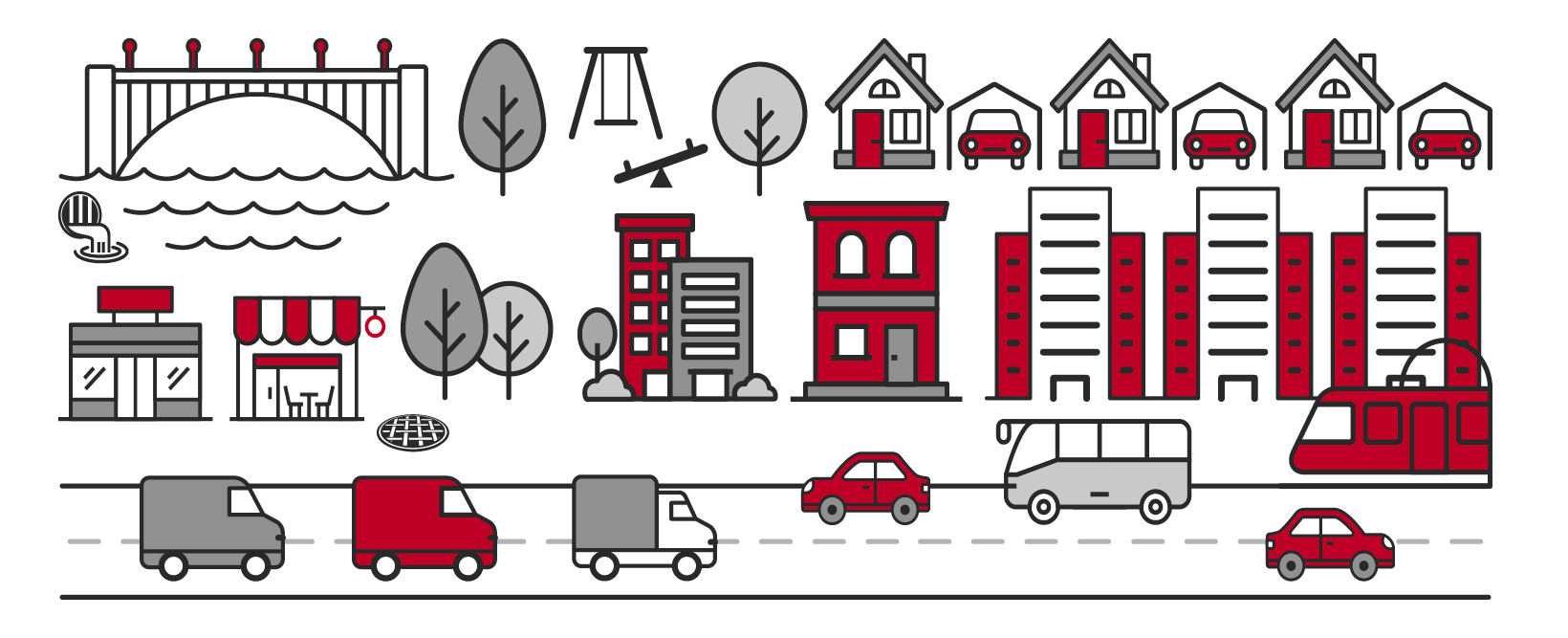Understanding what asset management is begins with an understanding of the word “asset” in this context. In the broadest sense, an asset is anything that delivers value to your organization and the stakeholders you serve. When we talk about municipal asset management, we typically talk about assets being a piece of publicly-owned infrastructure, for example a road, a water pipe, an indoor or outdoor recreational facility, an office building, etc. Of course, we can also consider other assets of the organization like people, processes, and knowledge. However, this resource will focus on infrastructure asset management.

The term asset management has been defined in different ways by a variety of government and non-government organizations in Canada. As part of the Leadership in Asset Management Program (LAMP), an initiative delivered by the Federation of Canadian Municipalities, a definition of asset management was created:
From a practical perspective, asset management is based on a set of fundamentals:
Value:
Alignment:
“In order to get the most bang for their buck, communities need the right training and tools to strategically plan, build, and maintain their infrastructure. The Government of Canada is working with the Federation of Canadian Municipalities to help municipalities make informed investment decisions that improve quality of life, grow the local economy and create jobs, and build more resilient and sustainable communities.”
The Hon. Catherine McKenna, Minister of Infrastructure and Communities
Infrastructure and community services
Fundamentally, infrastructure assets exist to provide services to our communities. Managing our assets to deliver those services is asset management. In order to have sustainable, resilient communities that will thrive now, and for future generations, investing in our asset management efforts cannot be ignored.
Public infrastructure is the foundation for a healthy and vibrant community. Many municipalities define assets by including all physical infrastructure that is necessary to support the social, economic, and environmental services provided by the organization. These asset types include, but are not solely limited to, tangible assets such as buildings, engineering structures, roads, parks, transit, IT networks, water and wastewater systems, and intangible assets such as land, software, data, and intellectual property. Some communities are including “natural assets” within their AM practices, and opting to manage things like land, drainage channels, rivers, and aquifers alongside their more traditional infrastructure assets.
Many of our communities are faced with an aging and quickly deteriorating asset base but have limited revenues to rehabilitate or replace those assets. At the same time, ratepayers, citizens, and businesses within the communities have increased expectations for the level of services received, despite the fact many reject the increases to taxes required in order to pay for the higher levels of service.
Asset management provides communities with the opportunity to do more with less, by providing a structured way of tracking performance, costs and risks to meet service objectives in the most efficient and effective manner.
The following video from FCM gives a quick, yet comprehensive look at the importance of asset management in your community. It is also a helpful resource for introducing AM to other members of your team, to elected officials, or to the public.

